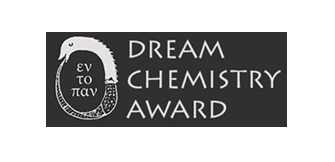Towards understanding the electrode/electrolyte interface for better electrochemical capacitors and energy storage systems
NaMeS students are invited to IPC PAS Seminar within Dream Chemistry Lecture Series delivered by:
Dr. Krzysztof Fic
Institute of Chemistry and Technical Electrochemistry,
Poznan University of Technology, Poland
Thursday, 24th October, 2019, 10.00
Assembly hall of the IPC PAS
Abstract
This lecture will provide comprehensive insight on the application of the in-situ and operando techniques such as Raman spectroscopy, Quartz Crystal Microbalance (EQCM), Scanning Electrochemical Microscopy (SECM), On-line Electrochemical Mass Spectroscopy (OEMS) and Operando Contact Angle Measurements (oCAM). These techniques were applied for determination of charge storage phenomena and ageing factors in activated carbon-based supercapacitors, operating with aqueous electrolytes.
It has been already confirmed with in-situ Raman spectroscopy that activated carbon electrodes operating in neutral aqueous media like Li2SO4 or LiNO3 solutions are prone to a mild oxidation during cycling (vibration modes from oxygen-based functionalities found) whereas the surface chemistry of negative electrode appears to be unchanged. EQCM study confirmed significant frequency/mass variation of the positive electrode. However, SECM demonstrated that during positive and negative polarization, the thickness (and volume) of the negative electrode changes remarkably, even within the typical capacitive storage range. This might be related with the specific adsorption of the solvated Li+ specimen. Interestingly, oCAM indicated that the hydrophobic/hydrophilic properties of activated carbon surface change with the polarization direction and potential values. OEMS confirmed that for more hydrophilic surfaces, more CO and CO2 gases should be expected at elevated voltages. It has been also shown that redox-active electrolytes (e.g. solutions of alkali metal iodides, bromides, thiocyanates) might have a detrimental impact on the carbon electrode performance. An oxidation of carbon surface has been identified near the iodide/iodine redox activity potentials, being even more pronounced for bromide-based systems. While EQCM study confirmed the presence of various iodine species in the electrolyte, carbon ‘corrosion’ has been observed especially for more concentrated iodide solutions.




